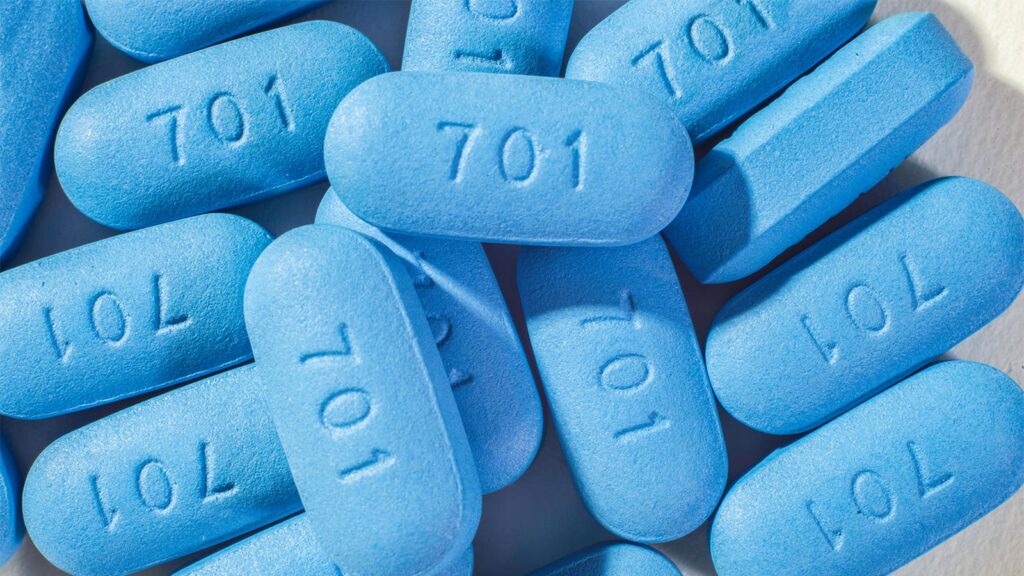Higher out-of-pocket costs for HIV pre-exposure prophylaxis (PrEP) were projected to lead to more people discontinuing PrEP altogether in a new analysis, raising concerns about a possible rise in HIV infections.
Risk-adjusted abandonment rates climbed from 5.5% among patients with no cost sharing to a projected 42.6% for patients with $500 out-of-pocket costs in a large insurance claim database covering most PrEP use in the U.S.
Even a small increase in out-of-pocket cost — from $0 to $10 per monthly PrEP prescription — was projected to double the rate of PrEP abandonment from 5.6% to 11.1%, Lorraine Dean, ScD, from Johns Hopkins Bloomberg School of Public Health in Baltimore, and colleagues reported in Health Affairs.
For patients paying from $25 through $100 per prescription fill, researchers predicted that the PrEP abandonment rate would triple from a baseline of 11% to nearly 32% if they started paying from $100 through $500 per prescription.
“Cost has been an ongoing barrier to people getting HIV PrEP,” Dean told MedPage Today. “If you don’t have insurance, PrEP can be hundreds of dollars per month, and even with insurance, the recurring co-pays, deductibles, co-insurance, and costs of STI [sexually transmitted infection] testing can be an issue. Our study shows that even small costs for PrEP greatly reduce the likelihood of people getting it.”
Her group also looked at actual rates of HIV diagnoses among people who did not fill their prescriptions. Across all out-of-pocket categories, ranging from $0 to over $500, HIV incidence was two- to threefold higher in the following year among patients who did not fill their prescription compared to those who did.
“I do think this [study] tells us something that most of us in practice already knew and that we see on a regular basis,” commented Matthew Adkins, DO, of Grant Family Medicine Residency in Columbus, Ohio, and a board member of the American Association of Family Physicians, who was not involved with the study. “It does not take much for people to not get PrEP or stay on PrEP.”
Researchers projected that a reduction in out-of-pocket costs would probably improve PrEP access. For instance, nearly half of patients facing out-of-pocket costs of more than $500 did not fill their prescription; but if this cost was reduced to $0, researchers estimated that their rate of prescription abandonment would fall to 7.3%.
People face multiple hurdles accessing HIV PrEP. For some vulnerable populations in the U.S., access to PrEP lags behind a number of middle- and low-income countries, Dean pointed out. In 2021, the U.S. Preventive Services Task Force (USPSTF) recommended that all private insurers and Medicaid expansion programs should pay for PrEP with no patient cost-sharing, since it qualifies as a preventive service covered under the Affordable Care Act (ACA).
Despite this recommendation, Adkins noted that it remains a challenge to get insurance companies to grant prior authorization for PrEP. “I have multiple patients who are not able to get this to go through their insurance correctly, and insurance is fighting covering PrEP on technicalities — essentially just not recognizing that this is PrEP and that it must be covered at $0,” he told MedPage Today.
Moreover, a federal district court judge in March 2023 struck down the ACA mandate for no patient cost-sharing for preventive services with a USPSTF grade of A or B (Braidwood Management v. Becerra). The ruling threatens coverage of HIV PrEP and other key preventive services. Although the federal government appealed the decision and an administrative stay halted enforcement of the ruling until the case is resolved, the decision has the potential to jeopardize people’s ability to afford PrEP, the authors noted in the study.
The study included 58,529 patients with a new HIV PrEP prescription approved by their insurer. About half of patients were younger than age 35, and 88.8% were male. The majority (78%) had commercial insurance, 14.3% received Medicaid, 4.2% received Medicare, and 3.5% paid cash. A total of 13.5% abandoned their index PrEP prescriptions. Almost 60% had PrEP out-of-pocket costs of $10 or less per month, but 11.4% had monthly out-of-pocket costs of over $100.
Researchers estimated risk-adjusted percentages of patients who did not fill an initial prescription across six out-of-pocket cost categories. They then simulated percentages of patients who would stop filling PrEP prescriptions under hypothetical changes to out-of-pocket costs that ranged from $0 to more than $500.
-
Katherine Kahn is a staff writer at MedPage Today, covering the infectious diseases beat. She has been a medical writer for over 15 years.
Disclosures
The study was funded by the National Institutes of Health.
Doshi has received research grants and/or consulting fees from Janssen Scientific Affairs, Merck, Spark Therapeutics, AbbVie, Acadia, and Otsuka, for work unrelated to this study.
Adkins reported no relevant financial disclosures.
Primary Source
Health Affairs
Source Reference: Dean LT, et al “Estimating the impact of out-of-pocket cost changes on abandonment of HIV pre-exposure prophylaxis” Health Affairs 2024; DOI: 10.1377/hlthaff.2023.00808.
Please enable JavaScript to view the

